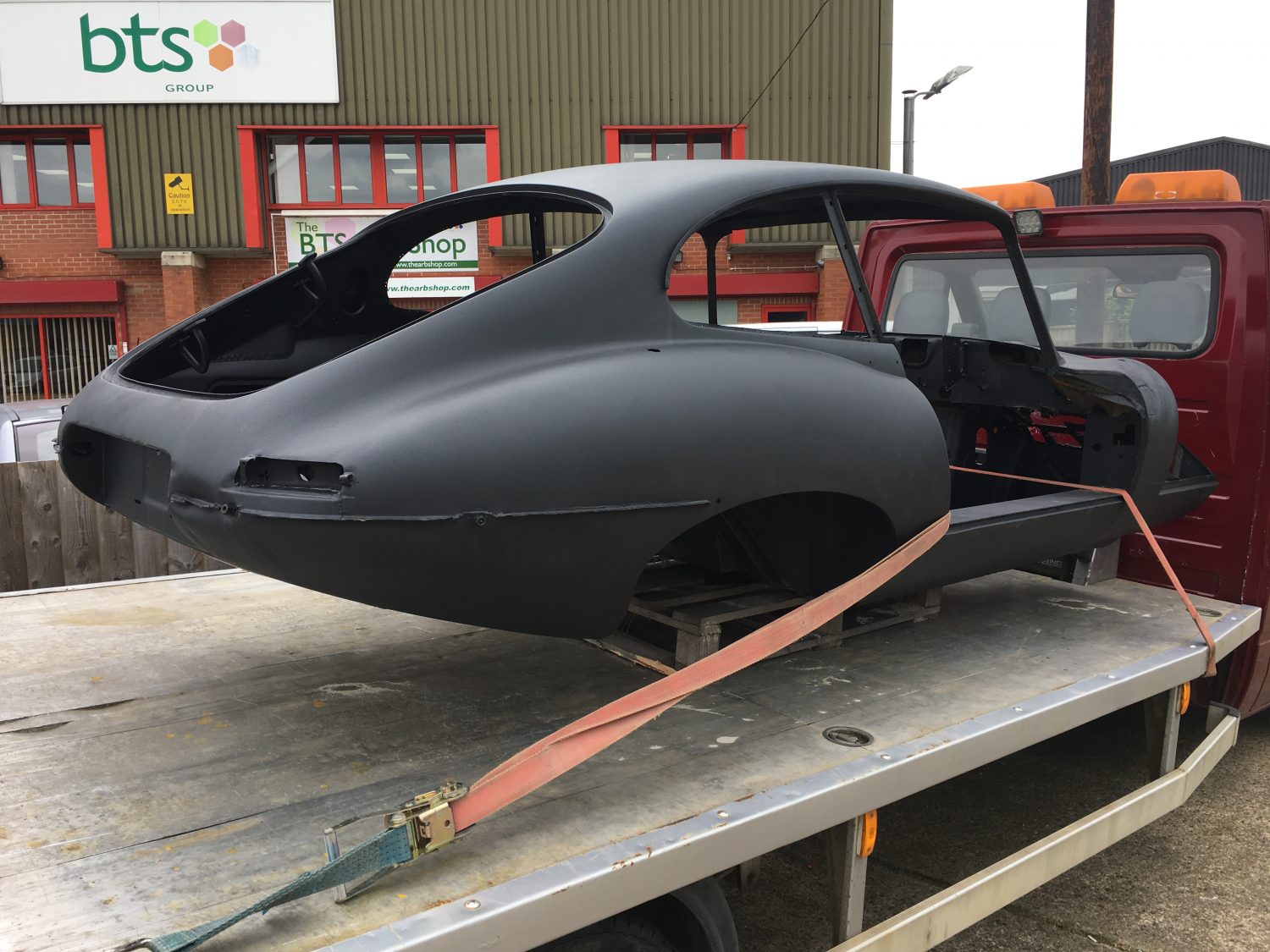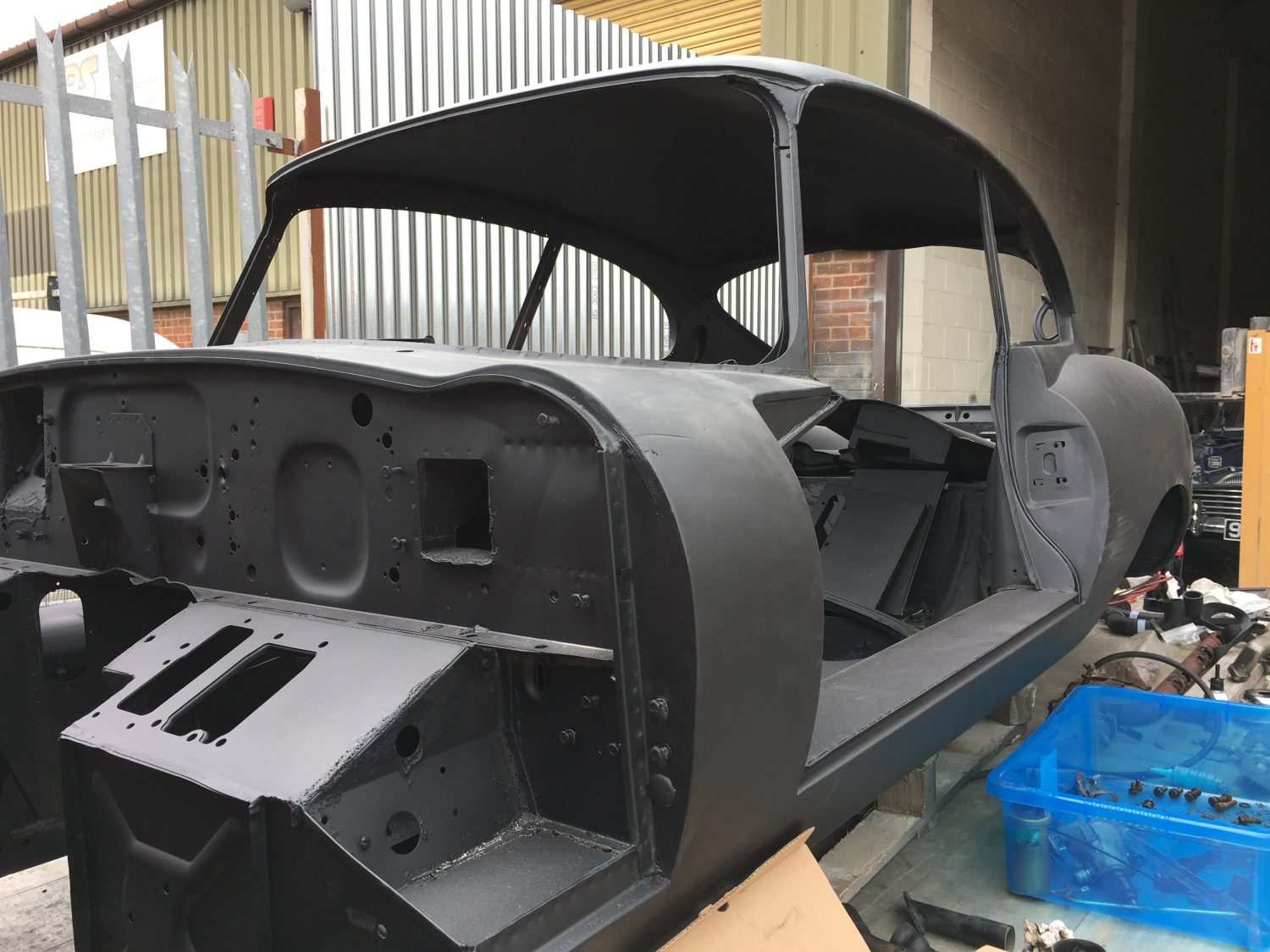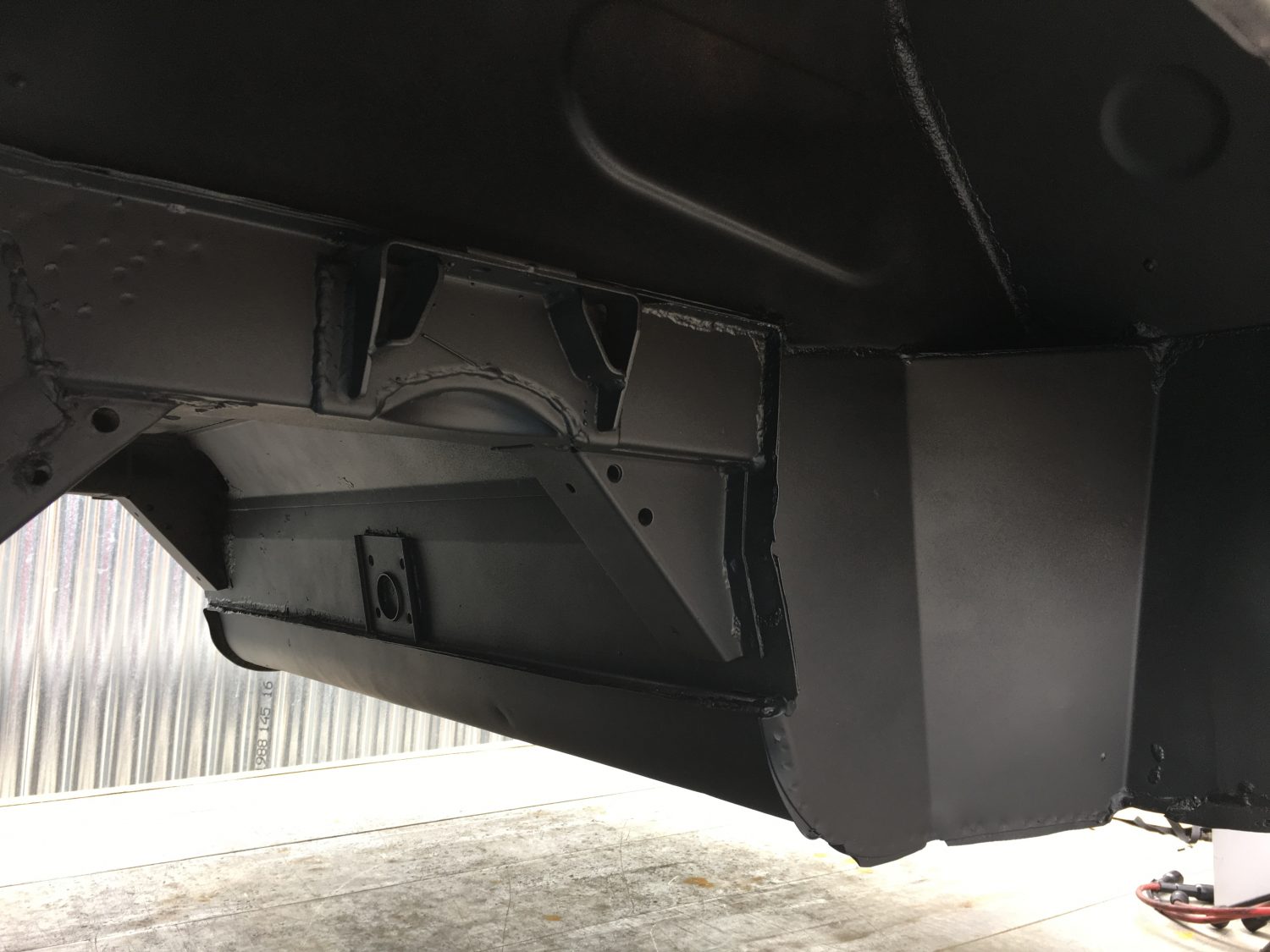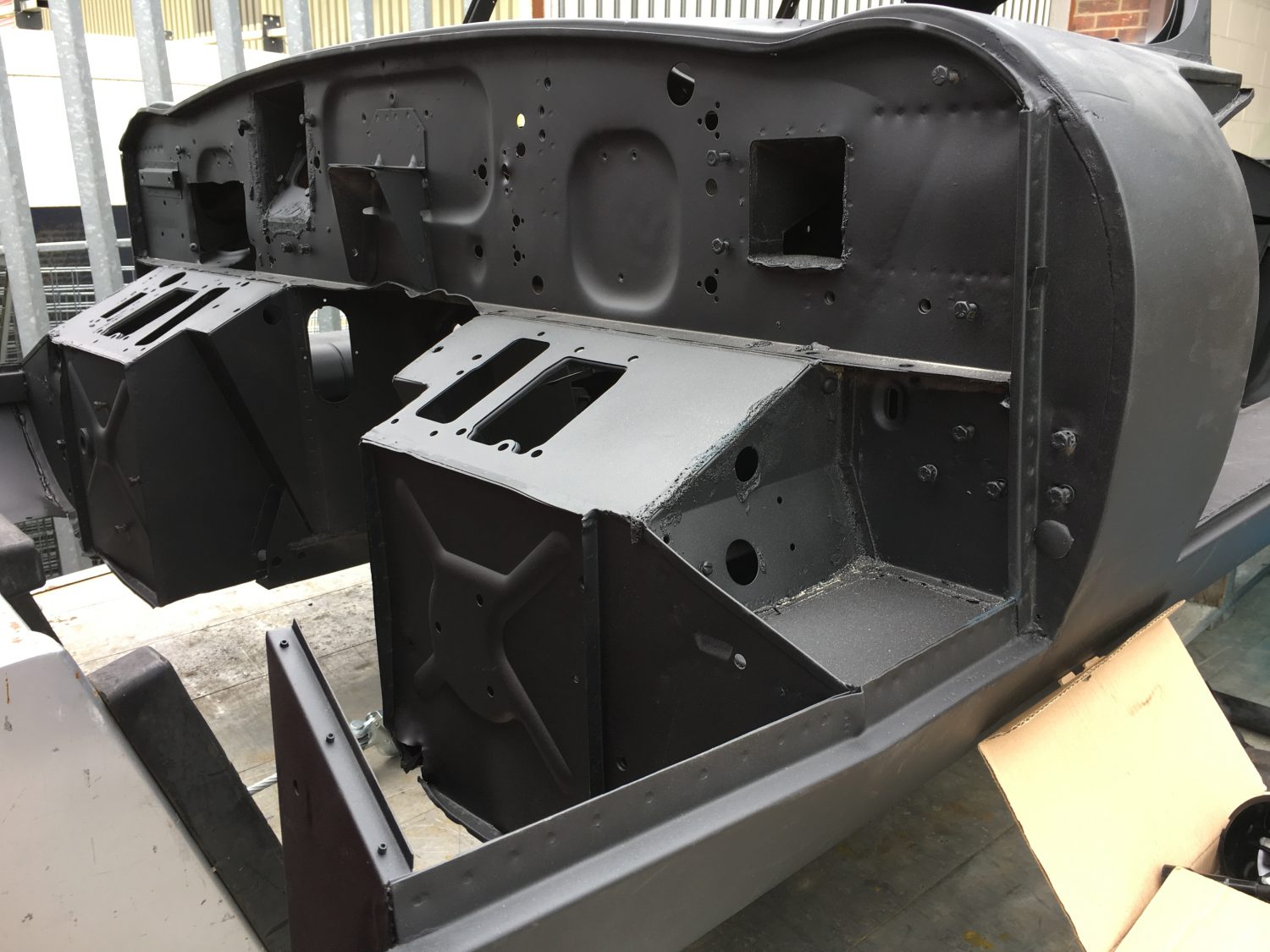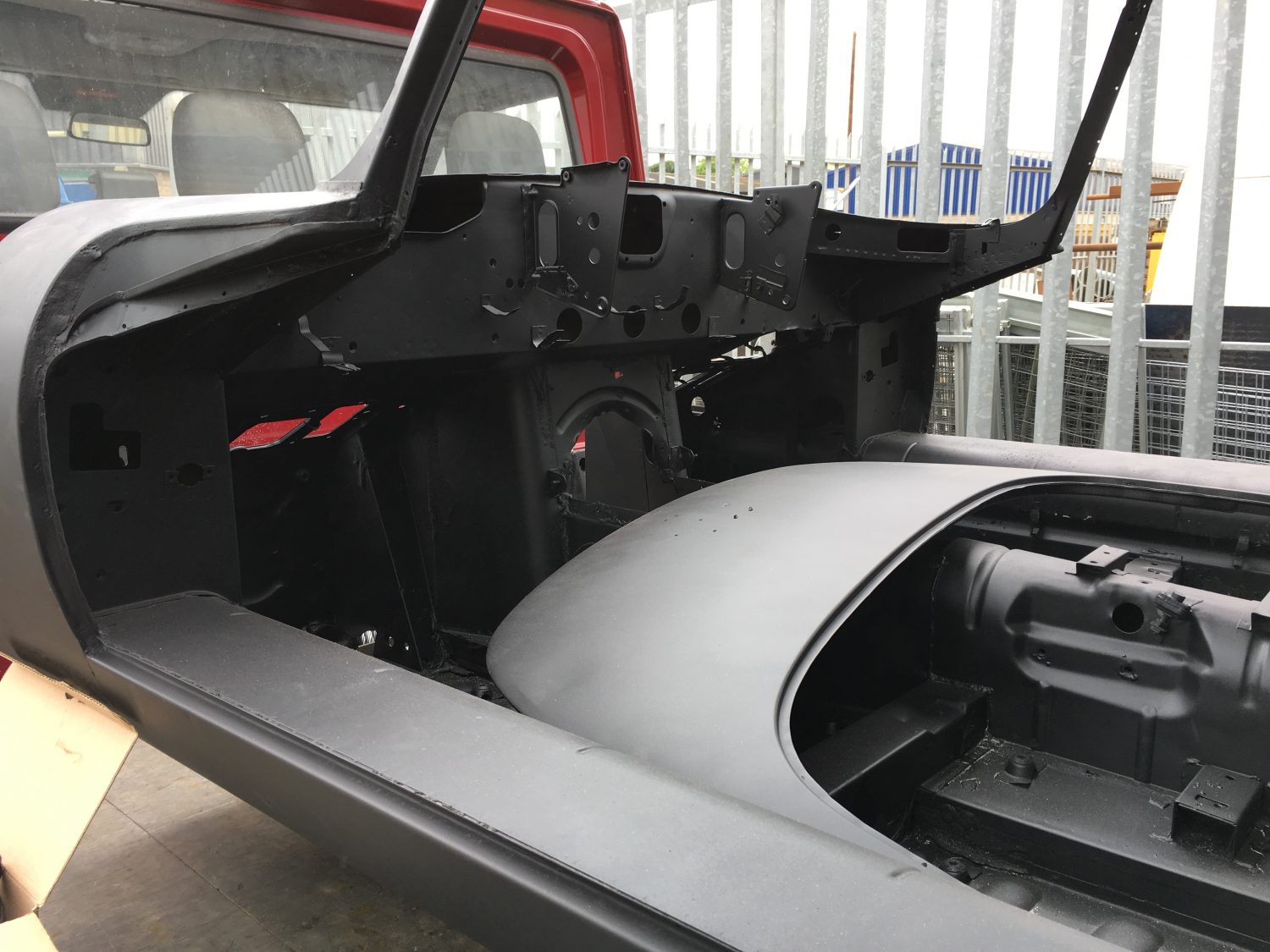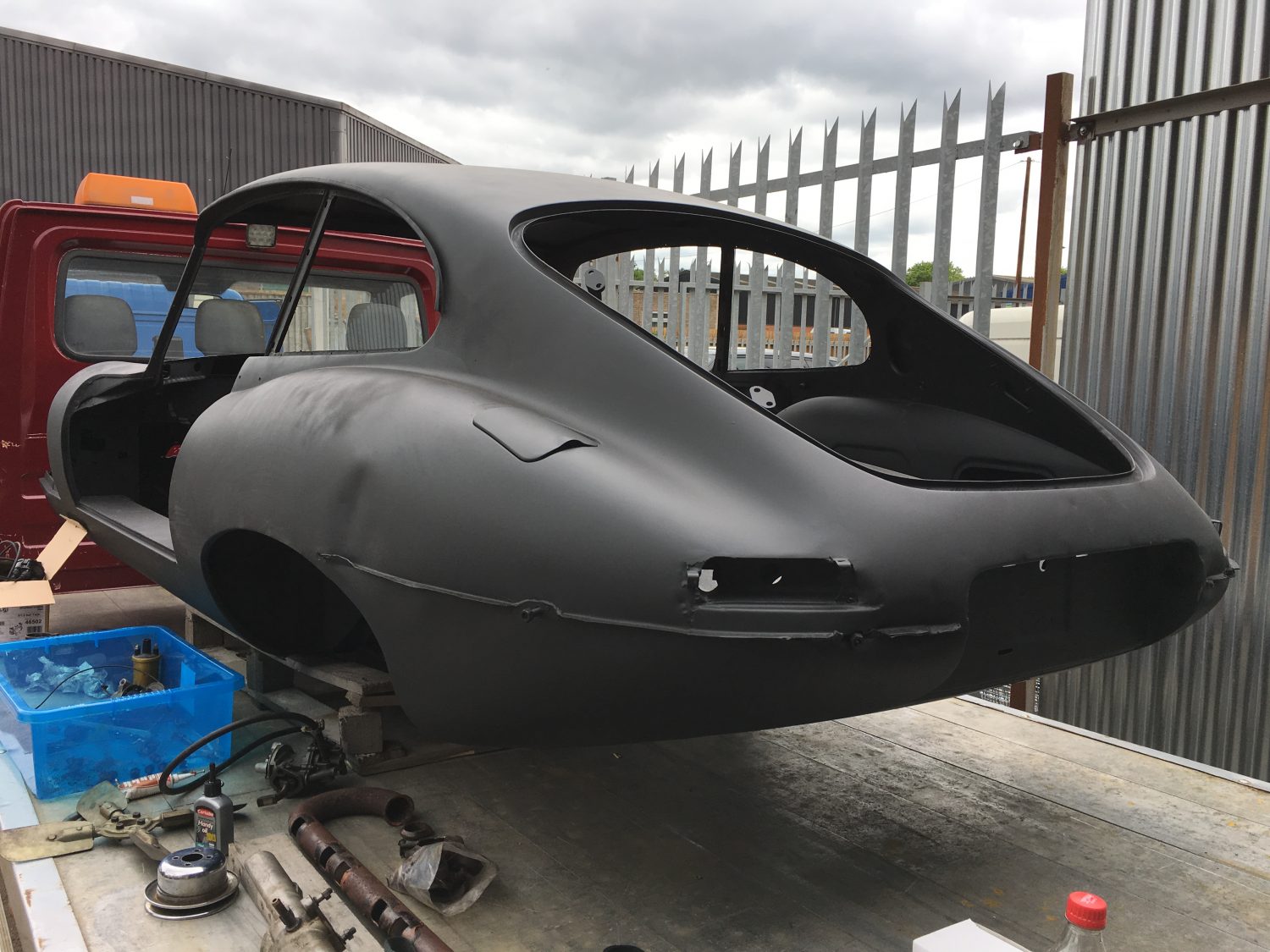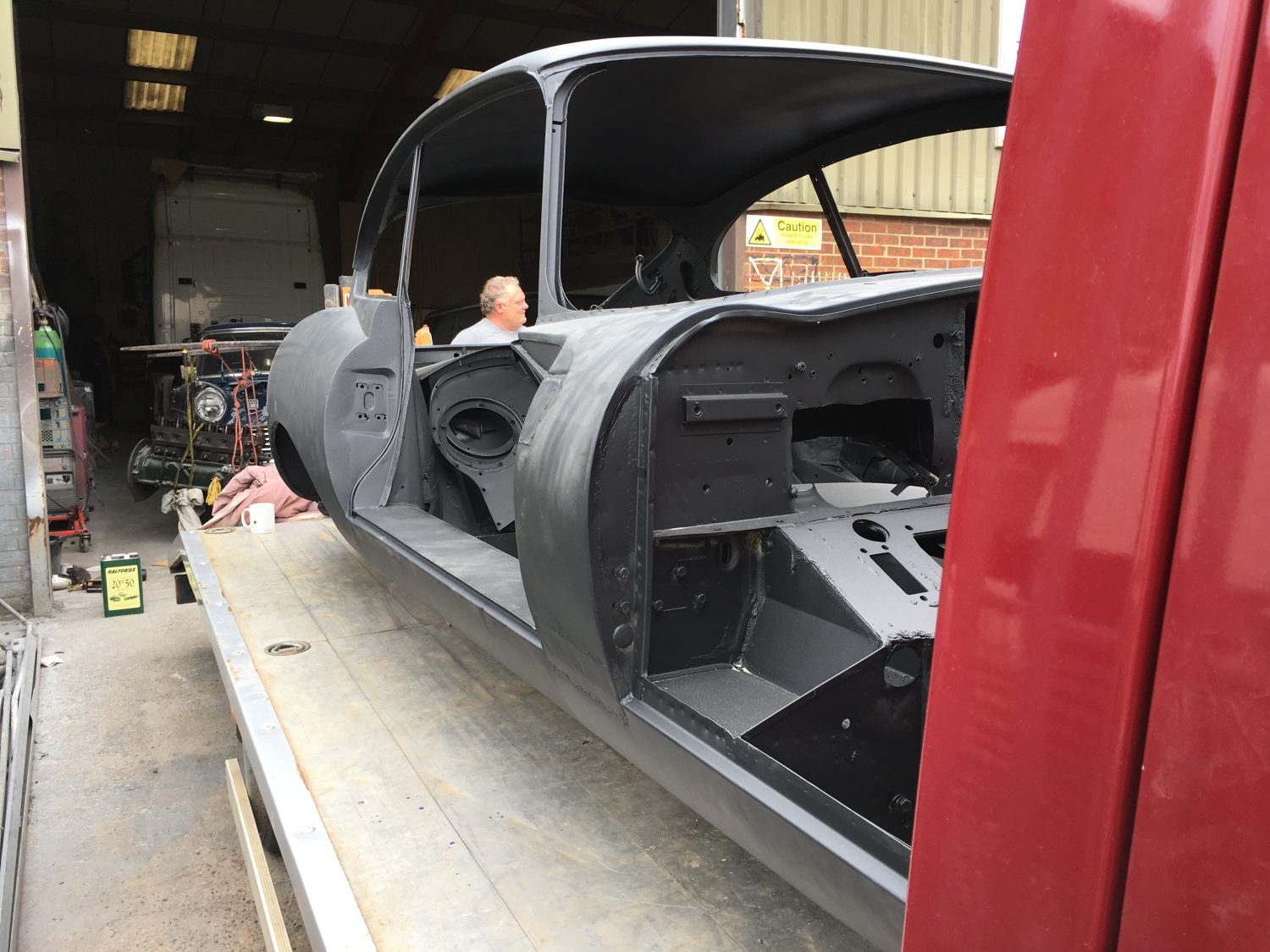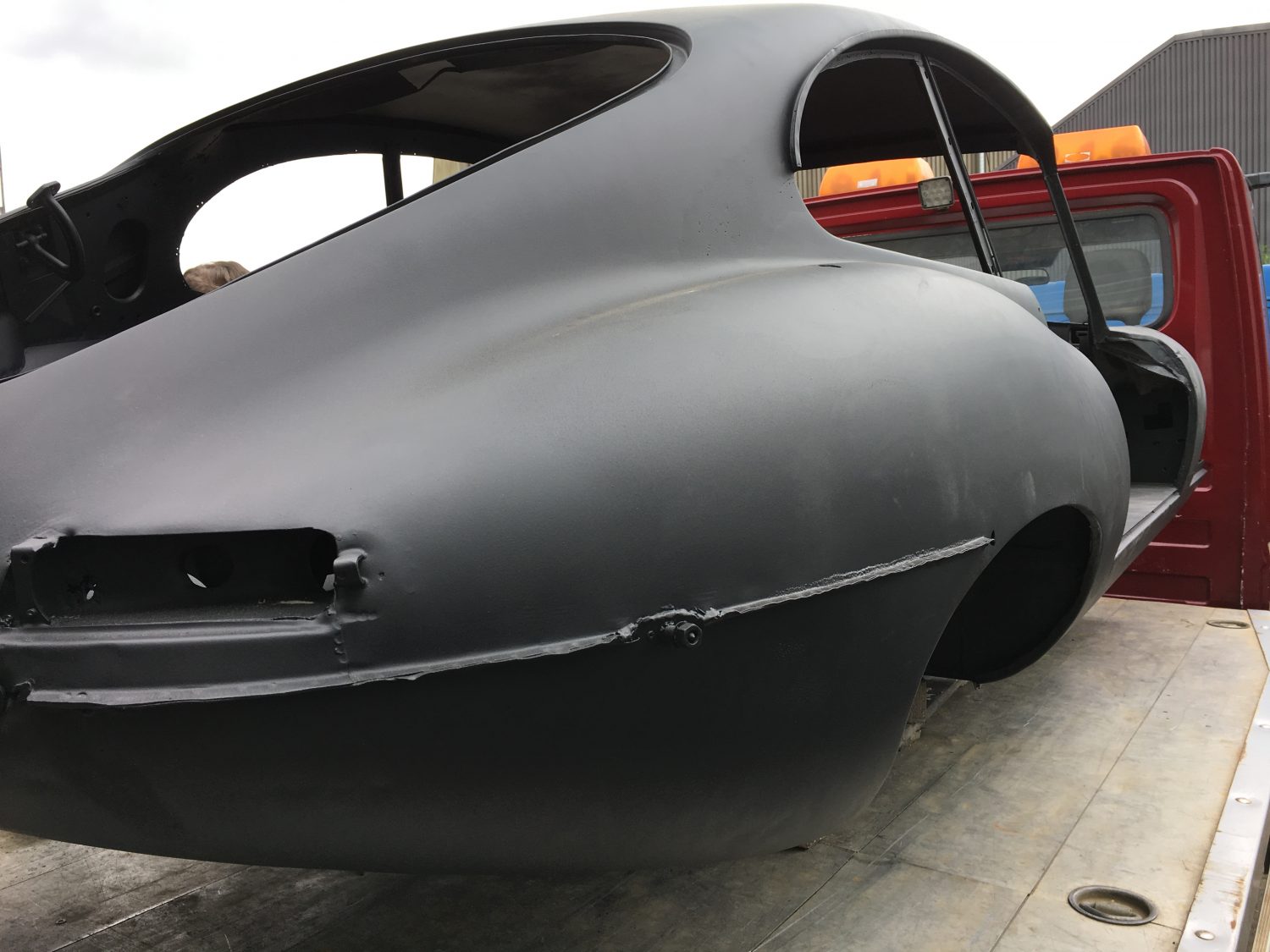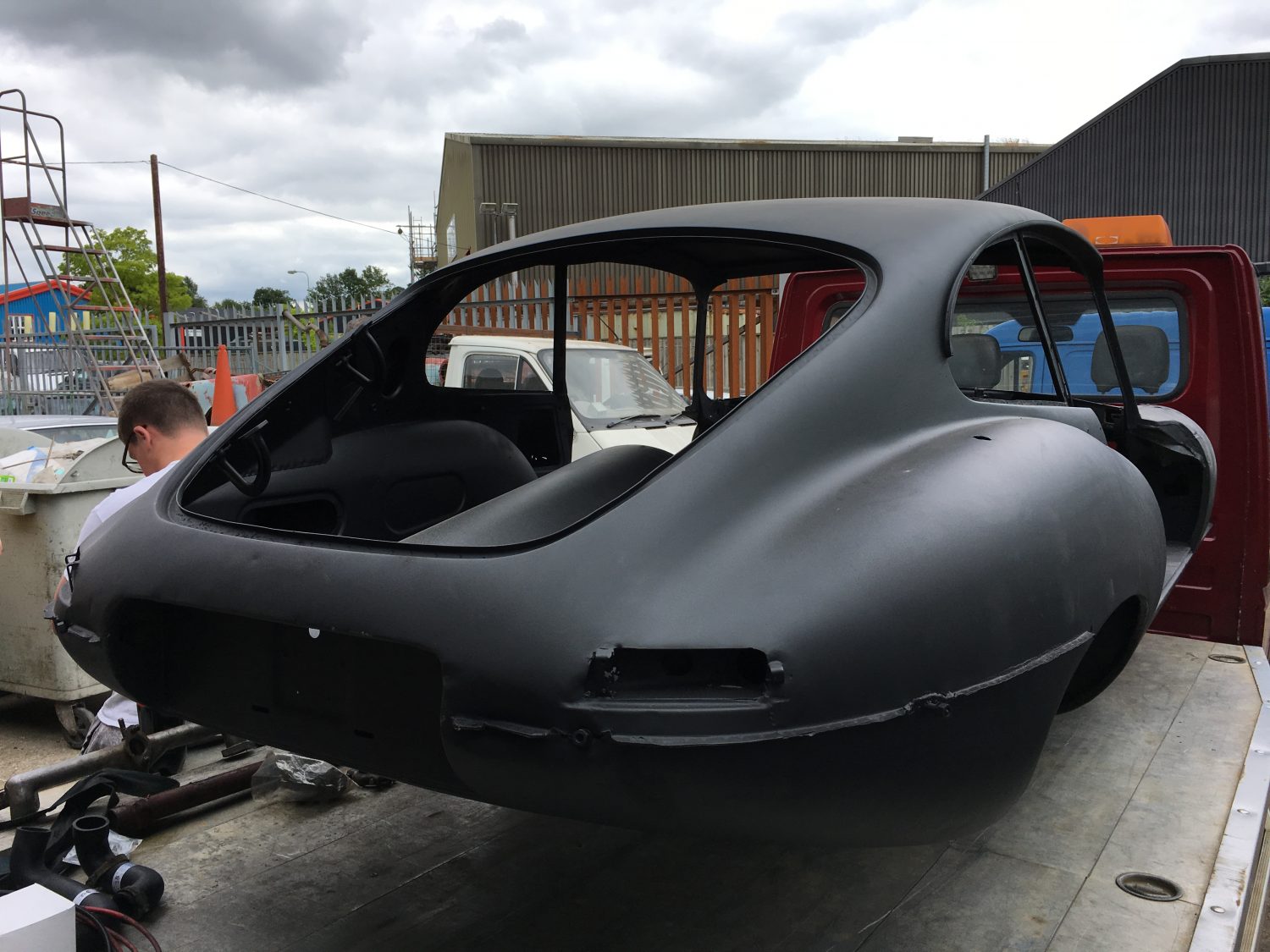Managing Director – Bridge Classic Cars
The shell of our racing 1967 Jaguar E-Type has returned having been been wet blasted.
Wet blasting, similarly to dry blasting, is the use of an abrasive material and compressed air. However, unlike dry blasting, wet blasting uses liquid to enhance the levels of surface finish that can be achieved.
The benefit of including water is a much smoother and more consistent finish.
Wet blasting was developed by Norman Ashworth in the early fifties; the introduction of water was originally as a response to the banning of silica in sand blasting although the benefits of wet blasting quickly became clear.
By lubricating the abrasive particles in a buffer of water Norman found that there was a much more even flow across the surface when using wet blasting systems. This has its advantages in that less damage is done to the substrate and any abrasive action is consistent across the whole surface.




